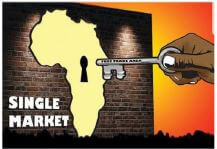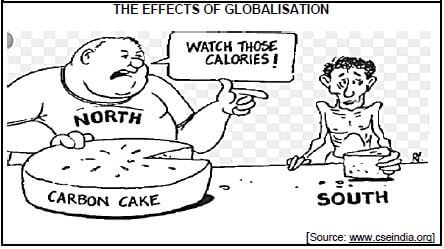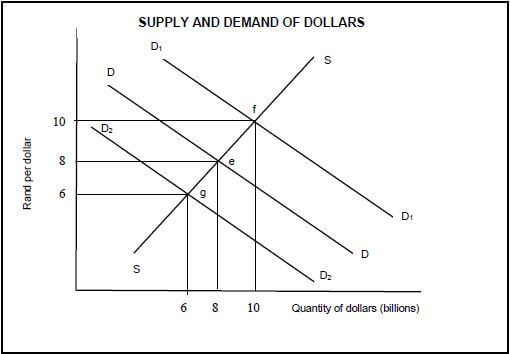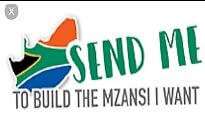Economics P1 Grade 12 Questions - NSC Exams Past Papers and Memos September 2019 Preparatory Examinations
Share via Whatsapp Join our WhatsApp Group Join our Telegram GroupINSTRUCTIONS AND INFORMATION
- Answer FOUR questions as follows in the ANSWER BOOK:
SECTION A: COMPULSORY
SECTION B: Answer any TWO of the three questions
SECTION C: Answer ONE of the two questions - Answer only the required number of questions. Answers in excess of the required number will NOT be marked.
- Number the answers correctly according to the numbering system used in this question paper.
- Write the question number above each answer.
- Read the questions carefully.
- Start EACH question on a NEW page.
- Leave 2–3 lines between subsections of questions.
- Answer the questions in full sentences and ensure that the format, content and context of your responses comply with the cognitive requirements of the questions.
- Use only black or blue ink.
- You may use a non-programmable pocket calculator.
- Write neatly and legibly.
QUESTIONS
SECTION A (COMPULSORY) 30 MARKS – 20 MINUTES
QUESTION 1
1.1 Various options are provided as possible answers to the following questions. Choose the answer and write only the letter (A–D) next to the question number (1.1.1–1.1.8) in the ANSWER BOOK, for example 1.1.9 D.
1.1.1 Short term savings and loans are part of the … market.
- factor
- foreign exchange
- money
- capital
1.1.2 The … curve illustrates a trade-off between employment and inflation.
- Laffer
- Lorenz
- Production possibility
- Phillips
1.1.3 The balance on the Financial Accounts in the Balance of Payment (BOP) excludes …
- reserve assets.
- net financial derivatives.
- net portfolio investments.
- net other investments.
1.1.4 The consumption expenditure of households and income of producers is regarded as … flow.
- money
- real
- circular
- capital
1.1.5 The consultations of the South African Reserve Bank (SARB) to convince banks to act in a manner that is desirable, is known as …
- interest rates.
- moral suasion.
- cash reserve requirement.
- open market transaction.
1.1.6 A development policy that works with the Sectoral Education Training Authority (SETA) is …
- Export Processing Zones.
- Joint Initiative on Priority Skills Acquisition.
- Reconstruction and Development Programme.
- Expanded Public Works Programme.
1.1.7 The Department of Trade and Industry implemented … to assist industries to grow by identifying certain cross cutting issues and competitive input sectors.
- Spatial Development Initiative
- Special Economic Zones
- Strategic integrated Projects
- Integrated Manufacturing Strategy
1.1.8 Depreciation of capital as a method used to encourage investment is known as capital ...
- widening.
- deepening.
- formation.
- growth. (8 x 2) (16)
1.2 Choose a description from COLUMN B that matches an item in COLUMN A. Write only the correct letter (A−I) next to the question number (1.2.1−1.2.8) in the ANSWER BOOK, for example 1.2.9 K.
| COLUMN A | COLUMN B |
1.2.1 Expenditure method |
|
(8 x 1) (8)
1.3 Give ONE term/word for each of the following descriptions. Write only the term/word next to the question number (1.3.1–1.3.6).
Abbreviation, acronyms and examples will NOT be accepted.
1.3.1 A view that explains that disequilibrium in markets are caused by the incorrect use of policies
1.3.2 The main source of government revenue
1.3.3 Money received without any productive service rendered
1.3.4 Increase in population numbers of cities and towns
1.3.5 The rate at which SARB lends money to banks for short periods
1.3.6 The return of land to those that have lost it due to discriminatory laws in the past. (6 x 1) (6)
TOTAL SECTION A: 30
SECTION B
Answer any TWO of the three questions in this section in the ANSWER BOOK.
QUESTION 2: MACROECONOMICS 40 MARKS – 30 MINUTES
2.1 Answer the following questions.
2.1.1 Name any TWO member countries of BRICS. (2 x 1) (2)
2.1.2 Why is the GDP at market prices normally higher than the GDP at factor cost? (1 x 2) (2)
2.2 Study the information below and answer the questions that follow.
KEYNESIAN ECONOMICS The concept of the multiplier process became important in the 1930s when John Maynard Keynes suggested it as a tool to help governments in decision-making. This ‘demand-management approach’ was designed to help measure the amount needed to reach high levels of national income. Analysts believe that an increase in government spending generally have a multiplier effect on economic growth, while uplifting living standards for affected people and communities. [Adapted from www.tutor2u.net] |
2.2.1 Give an example of a leakage. (1)
2.2.2 What factor influences the size of the multiplier? (1)
2.2.3 Briefly describe the term multiplier. (2)
2.2.4 Explain the effect on national income when injections are more than leakages. (2)
2.2.5 Suppose the South African government spends R250 m on the economy. Calculate the multiplier effect if mpc = 0,7. Show all calculations. (4)
2.3 Study the following information and answer the questions that follow.
AfCTA is a planned free trade area among 49 of 55 African states. It will be the largest in the world in terms of participating countries. [Source: TESFANEWS, 9 February 2019] |  |
2.3.1 Except AfCTA, name any other free trade area in the world. (1)
2.3.2 Which trade protocol is behind the establishment of a single market in Africa? (1)
2.3.3 Briefly describe the term free trade area. (2)
2.3.4 Briefly explain the role of the World Trade Organisation as part of globalisation. (2)
2.3.5 How can Africa benefit from being a single market? (2 x 2) (4)
2.4 Discuss the length and amplitude of a business cycle. (4 x 2) (8)
2.5 Evaluate the effects of a currency depreciation in an economy. (8) [40]
QUESTION 3: ECONOMIC PURSUITS 40 MARKS – 30 MINUTES
3.1 Answer the following questions.
3.1.1 Name TWO demand side approach policies to growth and development. (2 x 1) (2)
3.1.2 How can interest rates be used by South African Reserve Bank to stimulate production of goods and services? (1 x 2) (2)
3.2 Study the cartoon below and answer questions that follow. 
3.2.1 Name ONE example of a country in the North. (1)
3.2.2 Provide a characteristic of the group of countries represented by ‘South’. (1)
3.2.3 Briefly describe the term globalisation. (2)
3.2.4 Briefly explain trade as a challenge of globalisation. (2)
3.2.5 How do countries in the North contribute to the destruction of the environment? (4)
3.3 Study the table below and answer the questions that follow.
CONTRIBUTIONS TO GROWTH IN REAL GDP (%)
SECTOR | 2016 | 2017 | 2018 |
Primary sector | -0,6 | 0,7 | -0,1 |
Secondary sector | 0,1 | 0,0 | 0,1 |
Tertiary sector | 1,1 | 0,5 | 0,7 |
Growth in total real GDP | 0,6 | 1,3 | 0,8 |
[Source: SARB: Quarterly Bulletin, December 2018]
3.3.1 Name ONE category of the secondary sector. (1)
3.3.2 What was the trend in the primary sector between 2017 and 2018? (1)
3.3.3 Briefly describe the term Gross Domestic Product. (2)
3.3.4 Explain the use of per capita GDP figures. (2)
3.3.5 How does real growth of 0,8% negatively affect the economy? (4)
3.4 Briefly discuss the cost of doing business as a supply-side approach in promoting growth and development in South Africa. (4 x 2) (8)
3.5 How do international organisations such as the World Bank and United Nations standardise the indicators of member countries? (8) [40]
QUESTION 4: MACRO ECONOMICS AND ECONOMIC PURSUITS 40 MARKS – 30 MINUTES
4.1 Answer the following questions.
4.1.1 Name TWO types of business cycles. (2 x 1) (2)
4.1.2 How can SMMEs contribute to economic growth? (1 x 2) (2)
4.2 Study the graph below and answer the questions that follow. 
4.2.1 Identify the demand curve that indicates a decrease in the demand for dollars. (1)
4.2.2 What type of exchange rate system is currently used in South Africa? (1)
4.2.3 Briefly describe the term devaluation. (2)
4.2.4 Explain ONE factor that can influence the demand for the dollar. (2)
4.2.5 What is the effect on the rand when there is a decrease in the demand for dollars? (4)
4.3 Read the information below and answer the questions that follow.
The NDP has progressed despite a [Source: fin24, 14 April 2018] |  |
4.3.1 In which year is the NDP aiming to eliminate poverty? (1)
4.3.2 Name ONE way how the government can reduce poverty among the vulnerable groups in South Africa. (1)
4.3.3 Briefly describe the term economic development. (2)
4.3.4 What negative effect can the NDP have on taxpayers? (2)
4.3.5 How will the South African economy benefit from the implementation of the NDP? (2 x 2) (4)
4.4 Briefly discuss the demographic social indicators. (4 x 2) (8)
4.5 How will an increase in export prices and import prices affect the South African economy? (8) [40]
TOTAL SECTION B: 80
SECTION C
Answer any ONE question of the TWO questions in the ANSWER BOOK. Your answer will be assessed as follows:
STRUCTURE OF ESSAY | MARK |
Introduction
| Max. 2 |
Body: Additional part: Give own opinion/Critically discuss/Evaluate/Critically evaluate/Draw a graph and explain/Use the graph given and explain/ Complete the given graph/Calculate/Deduce/Compare/Explain/ Distinguish/Interpret/Briefly debate/How/Suggest/Use the information and argue, debate, evaluate. | Max. 26 Max. 10 |
Conclusion
| Max. 2 |
TOTAL | 40 |
QUESTION 5: MACROECONOMICS 40 MARKS – 40 MINUTES
Discuss in detail how the following factors contribute to poor public-sector provisioning:
- Lack of accountability (10)
- Inefficiency (8)
- Difficulty in assessing needs (8) (26)
Suggest solutions on how efficiency of state-owned enterprises can be improved. (10) [40]
QUESTION 6: ECONOMIC PURSUITS 40 MARKS – 40 MINUTES
Discuss in detail the appropriateness of South Africa’s regional development policies in terms of international benchmark criteria. (26)
How successful has the South African government been in meeting the aims of regional development? (10) [40]
TOTAL SECTION C: 40
GRAND TOTAL: 150